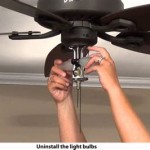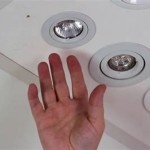Essential Aspects of Bathroom Ceiling Lights for an Optimal Lighting Experience
Bathroom lighting is crucial for creating a functional, comfortable, and aesthetically pleasing space. The ceiling lights play a significant role in providing ample illumination and enhancing the overall ambiance of the bathroom. Choosing the right bathroom ceiling lights involves considering various aspects, including the size, layout, natural light availability, and overall design of the bathroom.
Size and Placement:
The size of the bathroom ceiling lights should be proportional to the room's dimensions. A large bathroom requires larger lights to provide sufficient illumination, while a small bathroom may benefit from smaller, more compact fixtures. Proper placement is equally important. The lights should be evenly distributed throughout the ceiling to avoid creating dark spots or harsh contrasts. Recessed lights can be used to create a diffused glow, while pendant lights provide focused illumination over specific areas, such as the vanity or shower.
Types of Lights:
There are various types of bathroom ceiling lights available, including recessed lights, pendant lights, flush mount lights, and chandeliers. Recessed lights are installed flush with the ceiling, providing a sleek and minimalist look. Pendant lights are suspended from the ceiling by a cord or chain, offering a more decorative touch. Flush mount lights are mounted directly to the ceiling without any visible gap. Chandeliers add a touch of elegance and grandeur, but are typically suitable for larger bathrooms.
Brightness and Color Temperature:
The brightness of the bathroom ceiling lights should be sufficient to illuminate all areas of the room without being overpowering. The color temperature, measured in Kelvins (K), can affect the ambiance of the bathroom. Warm light (2700-3000K) creates a cozy and inviting atmosphere, while cool light (4000-5000K) is more energizing and suitable for task lighting. Dimmable lights provide flexibility, allowing you to adjust the brightness to create different moods.
Moisture Resistance:
Bathrooms are inherently humid environments, so it is essential to choose ceiling lights that are specifically designed for use in moist areas. These lights are typically rated with an IP (Ingress Protection) rating, which indicates their resistance to water and dust ingress. An IP rating of 44 or higher is recommended for bathroom ceiling lights.
Style and Design:
The style and design of the bathroom ceiling lights should complement the overall aesthetic of the bathroom. Modern and contemporary bathrooms may opt for sleek, minimalist fixtures with geometric shapes or metallic finishes. Traditional bathrooms may prefer more ornate chandeliers or pendant lights with classic designs. It is important to consider the other fixtures in the bathroom, such as the vanity mirror, towel racks, and hardware, to ensure a cohesive and stylish look.
Energy Efficiency:
Energy-efficient bathroom ceiling lights can help reduce your electricity bills and minimize your environmental impact. Look for lights that use LED or CFL bulbs, which are known for their high efficiency and long lifespan. By incorporating energy-efficient lighting, you can have a well-lit bathroom without sacrificing energy consumption.

Best Bathroom Lighting Ideas And Ceiling Lights For You Housing News

25 Beautiful Bathroom Ceiling Ideas

Interior Lights Lamps For Bathrooms At Light11 Eu

Bathroom Lighting Bee Ridge

Bathroom Lights Reuter Com

Bathroom Lighting Philips

Bathroom Ceiling Light Optional Bluetooth Wireless Ip44 Buy At City

Bathroom Lighting Philips

Inlight Cloud Large Plastic Steel Chrome Effect Bathroom Led Ceiling Light Diy At B Q

24w Led Flush Mount Ceiling Light Waterproof Ip54 Daylight White Bathroom Available Lepro
Related Posts








